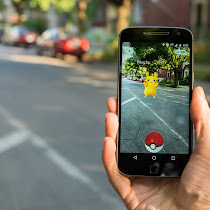Social Networking As An Educational Tool
Social networks make the education better, cheaper, more available and responsive, so they have become very popular. The more users add new content, the more people reach the content and the link. So, with the help of this collective activity, web grows rapidly. Web 2.0 has brought some new such characteristics Profile, Traversable, Publicly Articulated Social Network and Semi persistent Public comments as well.
User generated content in education
comes with both benefits and limitations. In terms of it’s benefits, we can say
that users can gain experience of the content, contents can be refreshed
without any help, tools support collaborative work and they also excite
learners. The arch benefit of web 2.0 is that users add value to the content.
When it comes to its limitatitons, we can talk about its trust, reliability and
believability issues. There is a lot of information on internet and it is not
easy to sort the correct knowledge from wrong one. As it is fast, students may
demand immediate answers, so it is also criticized for encouraging short
attention span.
Milennials can multitask, prefer learning
from videos, pictures and in a interactive way. However, they can also lack the
ability to evaluate content, do plagiarism and socialize mainly on online.
As printed materials are too late,
too inaccessible and too expensive, academics usually make use of technologies.
Web 2.0 helps us in bth research network and learning network. Also, our
relation with knowledge changed. Knowing where to find information has become
more important. We do not acquire knowledge in a linear manner, but we use
tools such as blogs and wikis.
Prensky thinks that learners now
think differently from their predecessors, so their brain could been changed as
well. Brown and Duguid do not agree to this and say that technology can not
change insights that students receive. With web 2.0 tools, multiculturalism,
cooperative and colleborative learning increase. So, teachers act acccordingly.
Use of activities are also important in online collabrative couse design.
Courses should be designed in
relation with students’ needs. They involve giving learner more control,
interaction with couse content and creating a timetable suitable for students.
There needs to be balance between control of the learner and freedom to work
creatively as well. Not surprisingly, all these change the role of the teacher.
Teachers should be qualified about new technologies and be able to use them in
the classes.
Learner design gives credit to
designing activities. It’s aimed for students to learn interactively and gain
more control in the class, so that learning could be enhanced. Also, teachers
are critices for not being immature enough. Accordingly, hey use technology to
mirror practice. However, web 2.0 tools help them improve themselves.
If you would like to have a look at other blogs, here are some options for you;
https://betulpmaterials.blogspot.com/
https://withfadime.blogspot.com/
https://hightechmats.blogspot.com/
https://learnwith-ilknurgoray.blogspot.com/
https://englishnmats.blogspot.com/




Yorumlar
Yorum Gönder